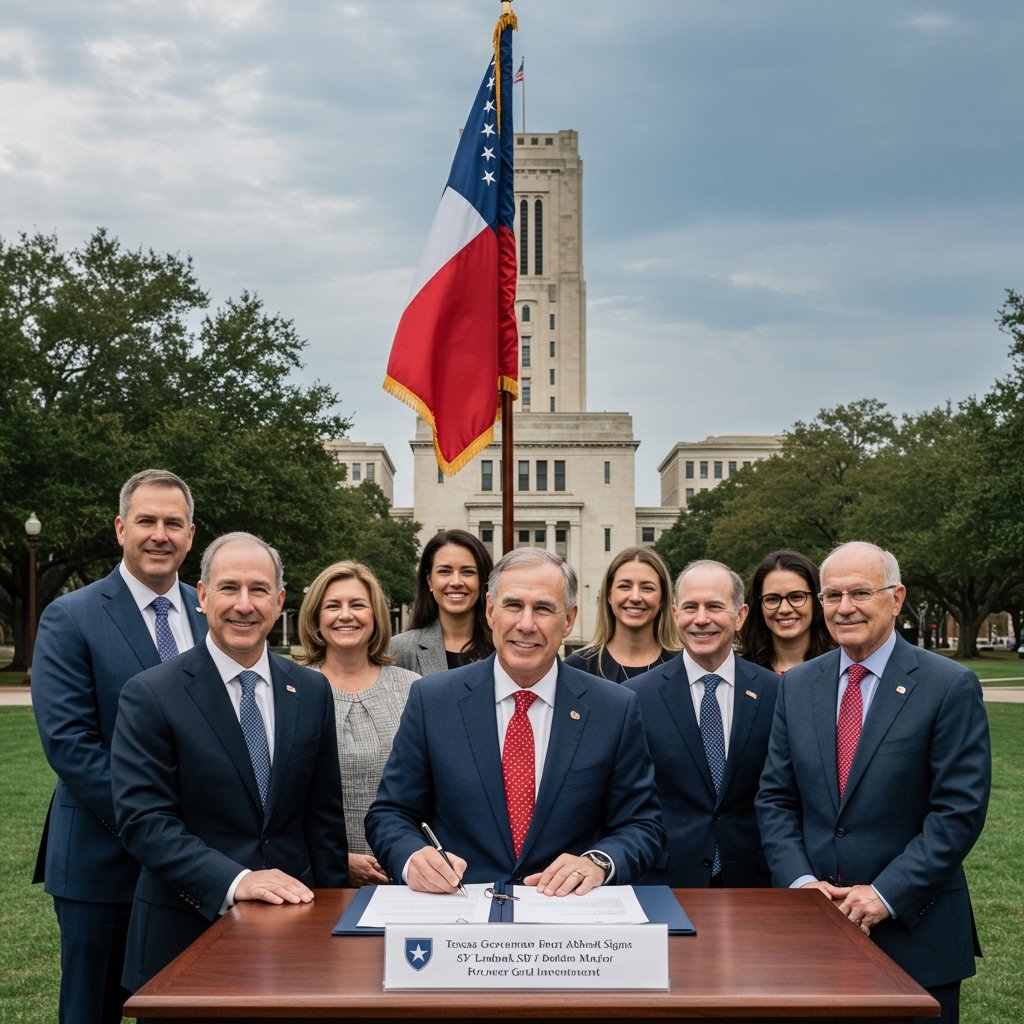Texas Legislature Passes Comprehensive Grid Investment Bill, SB 7
AUSTIN, Texas – The Texas Legislature has successfully navigated and approved a significant legislative package aimed at fortifying the state’s power grid infrastructure. Senate Bill 7 (SB 7), a comprehensive measure designed explicitly to incentivize significant private investment into the system managed primarily by the Electric Reliability Council of Texas (ERCOT), represents a landmark effort to enhance reliability and resilience following past grid stress events.
The bill received final legislative approval and was subsequently signed into law by Governor Greg Abbott on March 24, 2025, marking a pivotal moment in Texas’ ongoing efforts to address the complexities of its unique, largely independent energy market. The legislation introduces a multi-faceted approach, blending financial incentives with regulatory streamlining and mandating physical improvements, all geared towards ensuring the grid can reliably meet the state’s rapidly growing demand, especially during periods of extreme weather.
Key Provisions Driving Investment and Reliability
At the heart of SB 7 are several key provisions intended to stimulate the development of dispatchable power generation – sources like natural gas, coal, or nuclear that can be turned on or off as needed, providing consistent power regardless of weather conditions. This focus stems from analyses indicating that while renewable energy capacity has surged in Texas, the grid requires a stronger foundation of on-demand power to maintain stability during peak demand or when intermittent sources like wind and solar are not generating.
One cornerstone of SB 7 is the establishment of performance-based bonuses for generators. This mechanism is intended to reward power plants for being available and providing energy during critical times of high demand or system stress. By financially incentivizing reliability and readiness, the state aims to encourage generators to maintain and operate their facilities optimally, particularly when the grid is most vulnerable. The specific structure and criteria for these bonuses will be subject to rules developed by state regulators, adding a layer of complexity to the implementation process but offering potential for significant financial upside for reliable operators.
Another critical component is the provision for accelerated permitting for new dispatchable power sources. Recognizing that the development of new power plants can be a lengthy process involving various state and local permits, SB 7 seeks to expedite this. By streamlining the regulatory pathway, the state hopes to reduce the time it takes to bring new, reliable generation online, thereby increasing overall system capacity and reducing future risks of supply shortages. This provision signals a clear policy priority towards adding capacity that can be dispatched on demand.
Further bolstering the grid’s ability to withstand extreme conditions, SB 7 includes enhanced weatherization mandates for critical facilities. Building on previous legislative efforts, this bill extends or strengthens requirements for certain power generation plants and transmission infrastructure to be adequately prepared for severe weather, including both extreme cold and heat. Ensuring that essential components of the energy system can continue operating under stress is deemed vital for preventing widespread outages like those experienced during past winter storms. These mandates place additional operational and capital costs on facility owners but are considered crucial for physical resilience.
Stakeholder Reactions and Economic Considerations
The passage of SB 7 has elicited varied responses from key stakeholders across the Texas economy. Business groups across various sectors have publicly expressed a stance of cautious optimism. While acknowledging the clear need for a more reliable and stable power grid to support economic growth and prevent costly business disruptions, they have also voiced concerns about implementation costs passed to consumers.
Industry representatives understand that the investments and operational changes encouraged or mandated by SB 7 will likely translate into higher costs for electricity users, including residential, commercial, and industrial customers. The balance between achieving necessary grid improvements and managing energy affordability remains a central point of discussion. Business leaders are keenly watching how the regulatory bodies, particularly the Public Utility Commission of Texas (PUCT) and ERCOT, will implement the bill’s provisions and structure cost recovery mechanisms.
ERCOT’s Outlook and Capacity Projections
Officials from ERCOT, the grid operator responsible for managing the flow of electric power to more than 27 million Texas customers, have provided their assessment of SB 7’s potential impact. ERCOT officials stated the bill’s framework could add 5,000 MW of reliable capacity by 2030. This projection highlights the significant scale of new generation capacity the state anticipates will be spurred by the incentives and streamlined processes outlined in the legislation.
Adding 5,000 megawatts of reliable capacity is a substantial step towards increasing the grid’s reserve margin – the cushion of available generation capacity above expected peak demand. A higher reserve margin provides greater assurance that the grid can handle sudden generation outages or unexpected spikes in demand, significantly reducing the risk of rolling blackouts or energy emergencies. ERCOT’s forecast underscores the bill’s potential to materially improve the grid’s fundamental reliability posture within the next five years.
Implementation Challenges and the Path Forward
While SB 7 lays out the legislative framework, the success of this ambitious grid investment plan hinges on its detailed implementation by state regulators and ERCOT. Developing the specific rules for performance bonuses, navigating the accelerated permitting process while ensuring environmental and safety standards are met, and enforcing enhanced weatherization mandates will require careful planning and execution.
The interaction between the new incentives and the existing market mechanisms will also be closely monitored. The goal is to ensure that the state’s interventions effectively encourage needed investment without distorting market signals or creating unintended consequences. The coming months and years will be critical as the various components of SB 7 move from legislative language to operational reality on the ground across Texas.
In conclusion, the passage and signing of Senate Bill 7 represent Texas’ most significant legislative action to date specifically targeting substantial private investment into its power grid infrastructure. With provisions for performance incentives, faster permitting for dispatchable power, and mandatory weatherization, the bill aims to bolster reliability and add critical capacity. While welcomed by many as a necessary step, the success of this ambitious plan will ultimately be measured by its ability to attract the projected investment, enhance grid stability without undue cost burden on consumers, and fulfill ERCOT’s projection of adding 5,000 MW of reliable capacity by 2030.






